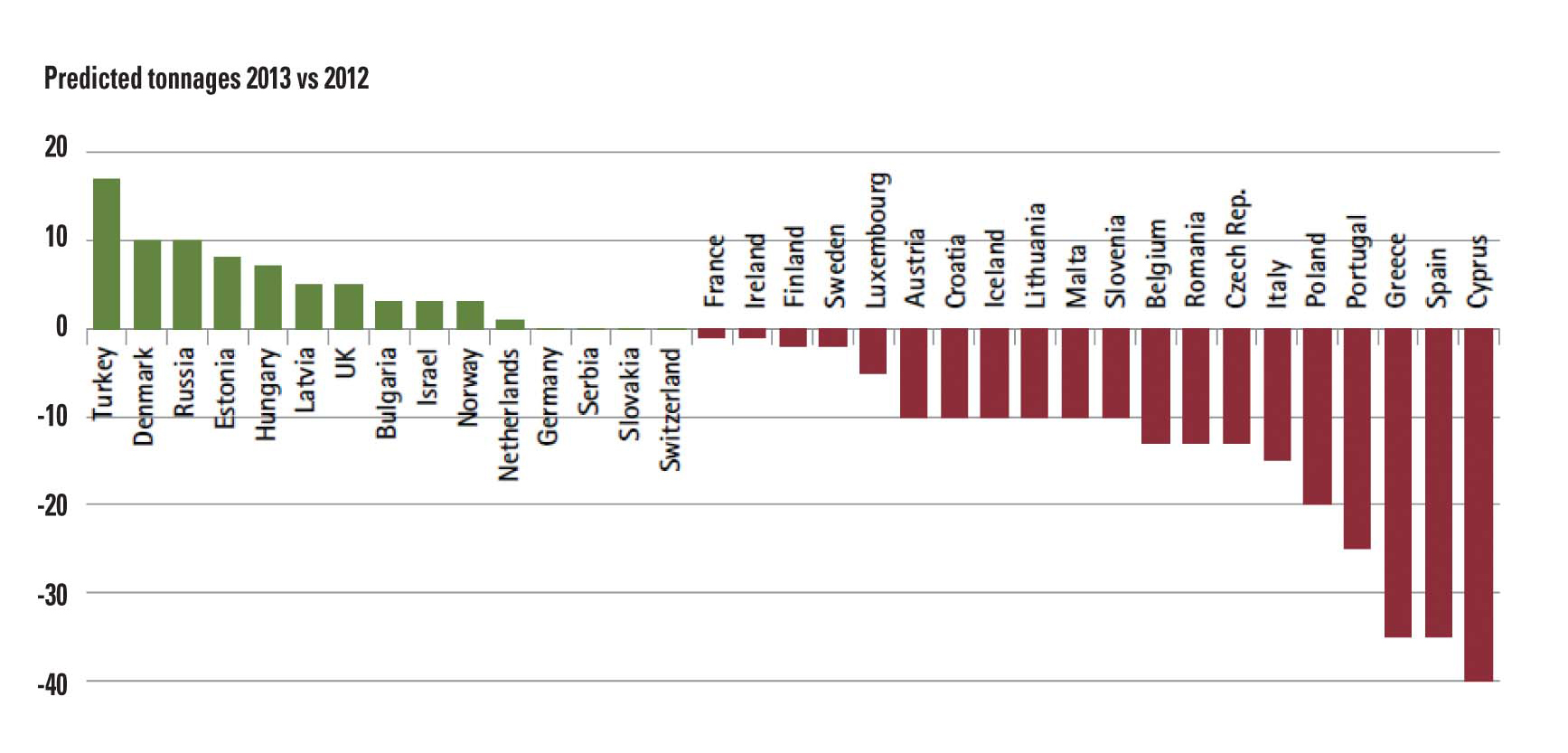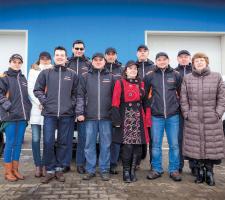
Eastern Europe covers a huge area and comprises a large number of countries of vastly differing sizes, so it is not surprising that the development of the aggregates industries in its constituent parts has been uneven.
General reports from several commercial and political quarters point to a generally “good momentum” in the region and at least “some stabilisation.” Individually, there are some heartening stories of thriving business, mergers, acquisitions and successful equipment segments. But some of the bigger pictures are painted in ominous colours of political and commercial downturn.
The region is, alongside Western Europe and North America, projected to expand between 3-5%/year through to 2017, according to Market Watch, which predicts growing demand for aggregates as the areas recover from financial and fiscal crises, leading to a rebound in residential, commercial and public works construction activity. North America and Eastern Europe will record somewhat faster growth than Western Europe during the 2012-2017 period.
International market intelligence organisation Datamonitor says that: “The Eastern European construction materials market is expected to generate total revenues of over US$58 billion (approximately €51.5 billion) in 2014, representing a compound annual growth rate (CAGR) of 16.8% between 2010 and 2014.The sand, gravel and other aggregates segment is expected to be the market’s most lucrative in 2014, with total revenues of over $35.4 billion (€31.4billion), equivalent to 60.8% of the market’s overall value.
The performance of the market is forecast to decelerate, with an anticipated CAGR of 10.7% for the five-year period 2014-2019, which is expected to drive the market to a value of some $97 billion (€86 billion) by the end of 2019.”
The latest UEPG (
Poland (268 million tonnes) and Russia (576 million tonnes) were the most prolific producers, with Serbia (17 million tonnes), Croatia (13 million tonnes) and Slovenia (nine million tonnes) the smallest by volume.
A major player in the region,
In its third-quarter report, the company stated that “the development in aggregates was uneven, but Holcim Czech Republic increased volumes markedly thanks to a major highway project. In ready-mix concrete, the situation was largely similar.
Holcim Azerbaijan was not able to maintain the high levels of volume growth recorded over recent years. As a result of market pressure from two new competitors and increasing imports, the local group company sold less cement in the period under review.
In Russia, cement volumes continued to grow despite the political tensions in the region. (In 2014, the country produced a total of 68.5 million tonnes of cement, up 3% on 2013, according to the State Statistics Service Rosstat).
Over the first nine months of 2014, Holcim’s cement volumes in Europe remained unchanged at 20.2 million tonnes, mainly as lower deliveries in Azerbaijan and Italy were offset by higher volumes in Russia and Romania. As higher demand at
The Romanian subsidiary of Lafarge has reported that its H1 2014 cement sales rose by 3.2% in value and 6.2% in volume compared with the same period in 2013. For Central and Eastern Europe, which covers Poland, Romania and Russia, cement sales for Lafarge rose 6% in the first half in terms of volume and 7.8% in terms of value compared with the same period in 2013.
Meanwhile, in what is still very much an ongoing process under the Lafarge Holcim merger, the two companies are proposing a number of disposals in Europe including Holcim’s operating assets in Hungary along with assets in Serbia and Slovakia.
In Poland, funds from the
“The General Directorate for National Roads and Motorways (
Construction output in Russia decreased in 2014 by 4.5% year-on-year in real terms, according to preliminary data of the State Statistics Service (Rosstat). By way of comparison, in 2013 the indicator practically stagnated, as it went up only 0.1% (official revised data).
In value terms, construction output was worth RUB 5,981.7 billion (€79.5 billion).
In December 2014 alone, Russia’s construction output fell by 2.7% year-on-year (in real terms, preliminary data), against December 2013 when there was a 1.4% decline (revised data). At the same time, the output within the sector was valued at RUB 798.3 billion (€10.40 billion), as compared to RUB 787.4 billion (€10.26 billion) in 2013. This means a 1.4% year-on-year increase.
As reported in Aggregates Business Europe, the international construction equipment manufacturer
The company has also appointed Mercury Invest as its authorised distributor in Bulgaria. With a large customer base ranging from civil engineering to road construction contractors, Chicago Pneumatic says the new distributor will help strengthen its presence in Eastern Europe.
Other companies are also expanding their presence in Eastern Europe. For example,
Led by general manager Claudiu Barbulescu, the company currently has 11 employees and plans to expand its personnel later in the year. Its strategy for the Romanian market is focused on providing a first-class after-sales service.
The picture is quite bleak in Russia and Ukraine, two areas where the economy is plunging. In Russia the rouble has lost half of its value against the US dollar in the past year because of plummeting oil prices and Western sanctions tied to the Ukraine crisis.
Finance Minister Alexei Kudrin has says: “Consumer prices have risen sharply. Large lay-offs have begun. The Moscow construction sector has seen 100,000 people being laid off.”
In Ukraine, the construction industry is set to fall by about 18% in 2014: it shrunk by almost 12% in 2013.
The zero GDP growth rate recorded in 2013 forced the government and local administrations to rein in proposed spending on many civil engineering projects. In 2013 civil engineering construction output is estimated to have contracted by 17.3%.
According to PMR, the lacklustre performance recorded in the last year is projected to be followed by a more severe decline in 2014, with a 21% reduction, essentially reflecting the lack of economic growth in the country and a reduction in spending on transport infrastructure development projects.
In 2014, €1.4 billion was allocated to Ukravtodor from the state budget, with 75% of this to be used to honour bank loan payments and only €175 million to be spent on road projects.
Residential construction in Ukraine, however, is expected to continue to increase in 2014. In the first half of 2014, newly-registered housing space stood at 4.1 million m², 28.7% more than a year earlier: 53% more new space was completed in H1 2014 than in H1 2013.
And according to PMR, in 2014 newly-registered residential space is expected to be about 10.3 million m², which is 3–4% more than the previous year.









